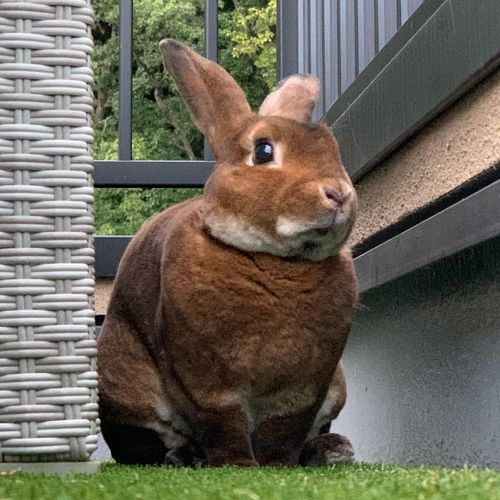Why are there fox sculptures in Japanese shrines?
Have you ever visited Japan?
If yes, have you ever tried to go to shrine?
If you have you would find there are a Torii (鳥居) and small house beyond Torii.
If yes, have you ever tried to go to shrine?
If you have you would find there are a Torii (鳥居) and small house beyond Torii.
Torii is a gate that divides holy area and secular world.
Therefore when you step in the Torii, you have to bow to pay respect to god.
And beyond Torii, you may see this kind of small house.
Therefore when you step in the Torii, you have to bow to pay respect to god.
And beyond Torii, you may see this kind of small house.
Inari Shrine
Inari house with two foxes in front of it
Foxes are not the object to pray for!
Even Japanese makes great mistakes here.
I see many people praying for foxes, but they are merely guardians of god.
The god you have to pray for lives inside the small house.
The name of the god is
1. 荼枳尼天 (Dakini)
I see many people praying for foxes, but they are merely guardians of god.
The god you have to pray for lives inside the small house.
The name of the god is
1. 荼枳尼天 (Dakini)
or
2.最上位経王大菩薩 (also known as Inari Bodhisattva)
2.最上位経王大菩薩 (also known as Inari Bodhisattva)
Inari Bodhisattva (Buddhism) or Inari God (Shinto)
Dakini used to be believed to be a witch in ancient India and introduced to Japan via china.
And firstly it was considered to be more like an evil god, but as time goes by people started to believe it as a holy god that provides people harvest.
It is not so common to see a shrine that directly enshrines Dakini.
The shrine we often see enshrines Inari God.
("God" is for Shinto. "菩薩: Bodhisattva" is for Buddhism. )
Inari God is based on Japanese traditional Shinto (神道) religion.
It is believed that Inari would provide people money, harvest, and success.
If you go to a shrine, they enshrine Japanese traditional Inari God because Shrine belongs to Shinto religion.
But if you go to a temple, it's a bit different.
Temple belongs to Buddhism, therefore they likely to enshrine 最上位経王菩薩 (Inari Bodhisattva).
菩薩 (Bodhisattva)is a super high classed Buddhism trainee who ho is wise enough to be Buddha but intentionally stays our world to teach human Buddhism.
So it is Buddism existence, not Shinto.
(I am going to make another article to explain the difference of Shinto and Buddhism later on!!)
And firstly it was considered to be more like an evil god, but as time goes by people started to believe it as a holy god that provides people harvest.
It is not so common to see a shrine that directly enshrines Dakini.
The shrine we often see enshrines Inari God.
("God" is for Shinto. "菩薩: Bodhisattva" is for Buddhism. )
Inari God is based on Japanese traditional Shinto (神道) religion.
It is believed that Inari would provide people money, harvest, and success.
If you go to a shrine, they enshrine Japanese traditional Inari God because Shrine belongs to Shinto religion.
But if you go to a temple, it's a bit different.
Temple belongs to Buddhism, therefore they likely to enshrine 最上位経王菩薩 (Inari Bodhisattva).
菩薩 (Bodhisattva)is a super high classed Buddhism trainee who ho is wise enough to be Buddha but intentionally stays our world to teach human Buddhism.
So it is Buddism existence, not Shinto.
(I am going to make another article to explain the difference of Shinto and Buddhism later on!!)
But here is a problem.
Buddhism is meant to follow the teaching of Buddha.
And not supposed to pray for Japanese Shinto's God.
But Shinto's Gods are so common among Japanese people, so cannot ignore it....
It's a big contradiction that bothered Buddhists so much.
But Japanese culture is so flexible. They found a solution.
One of the examples is "神仏習合" (shinbutsu-shugo).
This is a thought that Japanese traditional Shinto God is merely an avatar of real Buddha and 菩薩 .
For short, people in old days thought that 菩薩 shows up in front of us taking the form of Japanese Shinto's God.
So Buddhists started believe Shinto's God is actually a Buddhism 菩薩.
Buddhism is meant to follow the teaching of Buddha.
And not supposed to pray for Japanese Shinto's God.
But Shinto's Gods are so common among Japanese people, so cannot ignore it....
It's a big contradiction that bothered Buddhists so much.
But Japanese culture is so flexible. They found a solution.
One of the examples is "神仏習合" (shinbutsu-shugo).
This is a thought that Japanese traditional Shinto God is merely an avatar of real Buddha and 菩薩 .
For short, people in old days thought that 菩薩 shows up in front of us taking the form of Japanese Shinto's God.
So Buddhists started believe Shinto's God is actually a Buddhism 菩薩.
Typical 神仏習合
Three stories pagoda which is a Buddhism's symbol and Torii which is Shinto's symbol coexist in the same area.
It looks quite bizarre but it is okay because they believe Shinto's Gods are actually Buddha or 菩薩.
Therefore logically there are only Buddha and 菩薩 in this area.
It looks quite bizarre but it is okay because they believe Shinto's Gods are actually Buddha or 菩薩.
Therefore logically there are only Buddha and 菩薩 in this area.
Foxes are guardian of Inari Bodhisattva!
It is widely believed that Foxes are the guardians of Inari Bodhisattva.
That is why there is a pair of foxes at Inari Shrine!!
And these foxes are not just a foxes.
They are called to be holy 白狐 (White Fox) that has mysterious power and live for thousand years.
In Buddhism, they think Foxes tend to have special powers and avilities.
Some of them are good foxes (善狐: zenko), some of them harm people (野狐: Yako)
Inari Shrine's 白狐 is the most famous style of Good Foxes (善狐).
白狐 protects Bodhisattva and people too as long as we properly worship and treat it.
(Maybe I am going to make another article on mysterious power of Foxes in Japanese Buddhism and Shinto!!)
That is why there is a pair of foxes at Inari Shrine!!
And these foxes are not just a foxes.
They are called to be holy 白狐 (White Fox) that has mysterious power and live for thousand years.
In Buddhism, they think Foxes tend to have special powers and avilities.
Some of them are good foxes (善狐: zenko), some of them harm people (野狐: Yako)
Inari Shrine's 白狐 is the most famous style of Good Foxes (善狐).
白狐 protects Bodhisattva and people too as long as we properly worship and treat it.
(Maybe I am going to make another article on mysterious power of Foxes in Japanese Buddhism and Shinto!!)
When you visit shrine or temple, please visit with respect.
It is said Inari Fox has great power.
It will help you if you pray or at least show respect.
But if you treat them badly or lack respect toward them, they would punish you.
野狐 (Bad Fox) is said to haunt people and kill them in the end.
Even 善狐 (Good Fox) is not always good.
They are good as long as you treat them nicely. If you treat them badly it may haunt you.
When you visit Japanese shrine or temple, please enjoy with respect!
It will help you if you pray or at least show respect.
But if you treat them badly or lack respect toward them, they would punish you.
野狐 (Bad Fox) is said to haunt people and kill them in the end.
Even 善狐 (Good Fox) is not always good.
They are good as long as you treat them nicely. If you treat them badly it may haunt you.
When you visit Japanese shrine or temple, please enjoy with respect!
Share
More Matome
Tuesday, December 02, 2025 at 15:58
27 view
Tuesday, December 02, 2025 at 15:57
28 view












.JPG)










